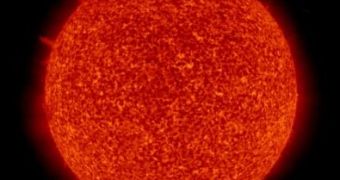The beginning of the 20th century found mankind right in the middle of a struggle to learn even more about the universe we live in. Einstein published his theory of relativity, resolving a long debate in the field of physics, while Hans Bethe from the Cornell University published for the first time an approximated model of the basic reactions that power stars. In his papers from 1939 he predicted that our Sun receives energy from two separate nuclear fusion reactions that are dependent on the temperature of the respective star.
For his theory, Bethe received the Nobel Prize for physics. However there was a problem. Although he succeeded in showing that the nuclear fusion reactions would produce the observed amount of energy, the fact it that they would be able to keep the Sun hot for only 30 million years, which came in direct contradictions to the prediction of biologists and geologists that also showed that the Earth is much older than that, therefore a supplemental source of energy is required to explain the Sun's incredibly long life.
The theory was pretty much solved and the result was right in Bethe's face. Spectral analysis conducted during the 1920s have shown that the Sun is mostly composed out of hydrogen gas. On the other hand, Bethe had previously predicted that the Sun would generate nuclear fusion reactions. The missing piece of the puzzle was to be found in Einstein's Theory of Relativity, in the form of the famous equation E = mc2, meaning that, as hydrogen gas is fused into helium, the mass difference between two hydrogen atoms and a helium atom is converted into pure energy, which is released in great quantities.
Furthermore, the nuclear fusion reactions that take place inside the Sun are of two types. The first one is the proton-proton fusion, whereas two protons fuse to create a neutron which captures a third proton, to create a helium-3 nucleus, that fuses furthermore to form helium-4. The second nuclear fusion reaction is the so-called C-N-O, which uses primarily oxygen and nitrogen to fuse protons into helium nuclei. Small traces of carbon are required to act as catalysts.
Only one of the respective nuclear reactions can take place at a time, depending on the temperature of the star's core. Somewhere in the 1930s scientists misjudged the Sun's core to be about 20 million degrees Celsius, when in fact it is only 14 million degrees, which led Bethe to conclude that the Sun is dominated by C-N-O nuclear fusion reactions.
Now we know that our Sun generates energy through proton-proton fusion reactions, and that C-N-O reactions are mostly taking place in massive hot stars, and while Bethe made a few mistakes along the way, his work presented significant importance in the field of physics.

 14 DAY TRIAL //
14 DAY TRIAL //